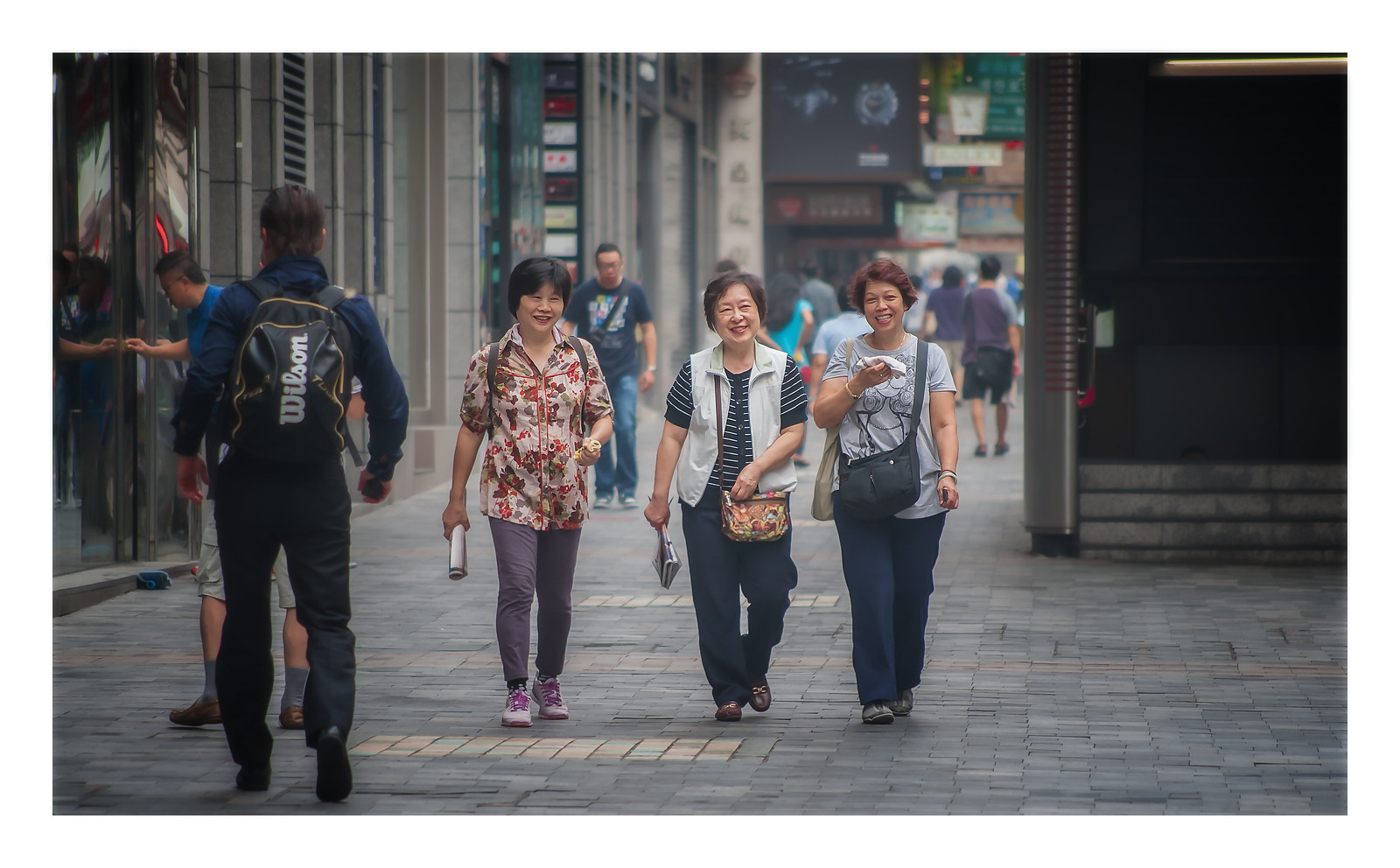Disagree. Firstly, I maintain that bokeh is overrated. The bokeh in this picture is fine. Only wonks care about it. Nobody really cared about it "then" except for portraiture lenses. This is true of 50's and expecially 35's and wider. It's an "internet thing" that only photoblog geeks concern themselves with. I have hardly ever observed "distracting bokeh" in any lens? And I have never seen bokeh that made me want to go out and blow $1,000's of dollars on a lens for it. It's simply not that important. Hexagonal, circular -- whatever? Nobody cares. (Circular apertures turn the sun into blobs of light instead of cool sun stars in daylight shooting, btw.) If I was after great bokeh? I'd have brought a telephoto lens and shot them as close as possible. Secondly, when HCB said "sharpness is a bourgeois concept" he wasn't kiddin'. The image is "sharp enough". What matters in this pic? The composition (it's okay for a grab shot). The colors -- I like them. The subject. They were kids, they didn't pose or stay still very long. An acceptable image was rendered in an instant hand-held., at a slow shutter speed, in low light at night -- terrible conditions, the worst. Oh -- and my 6', overweight, middle-aged frame was rather hunched over in an awkward position. Ouch. And not condusive to keeping a camera steady.
These are people shots, candids, at night with little kids An acceptable image rendered. A decisive moment. I'm not shooting textures on a tripod with studio lighting. This illustrates why 1.4 over 1.8. Because here you're fighting motion blur and camera shake as much as anything and every photon matters to buy you every 1/nth of shutter speed.
That the lens was able to render an acceptable image, on the spot, under the worst of conditions (with wirey little kids, no less) to the average viewer (not internet lens testers) is a testimony to its capabilities as a photographic tool. Also, you can see fine hair and texures. Like I said, sharp enough. I also say some of the perceived softness has as much to do with shutter speed, camera shake, and motion blur shooting live subjects, handheld, in low light. It's shapness wide-open is what it is -- not "biting" but acceptable.
I am doubling down, yes.













